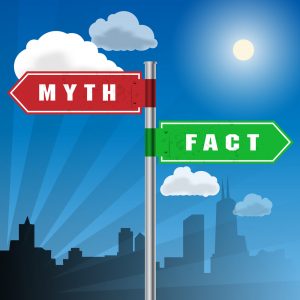 Experts agree: conventional wisdom surrounding so-called real estate facts is not always accurate
Experts agree: conventional wisdom surrounding so-called real estate facts is not always accurate
We’ve all heard them, and everyone assumes these nuggets of wisdom are true, but should we rely on what are often considered real estate facts? Experts say absolutely not. Hard data challenges many of the common untruths when it comes to home buying. Let’s take a look at the top 4 real estate myths and bust them:
Myth #1: You should buy the worst house in the best neighborhood
This tidbit seems to make sense, especially for those looking to make a good investment. But the truth is that buying the worst house in the best neighborhood can actually be a bad investment. Why? Because demand for an inexpensive home in a luxury neighborhood is more likely to raise concerns from home buyers than attract bargain hunters. That is unless you can pick up a fixer-upper in a hot neighborhood that’s had at least five consecutive years of home value appreciation. But even then, timing is everything, so be cautious of this real estate “fact.”
Myth #2: Buying a foreclosure will get you the best return on investment
Foreclosures do tend to sell for less, but that doesn’t mean they’ll be the best return on investment. Just ask yourself if the owners were in financial crisis. If so, did they keep up on basic maintenance? Then consider that some homeowners actually vandalize their home before they leave. Also, banks don’t have the same disclosure obligations on foreclosures. All that can add up to a real lemon. Instead of assuming a foreclosure is a great deal, you still must do your due diligence and compare prices of similar homes in need of some help. Only then will you be able to see if the discount is worth it.
Myth #3: Invest in something other than real estate for a greater return
Buying a home is generally an excellent investment. It’s also true that investments such as stocks might perform at a rate higher than real estate, but you can’t bank on that. According to experts who crunched the numbers from 1975 to 2014, the S&P 500 averaged an annual return of 10.4% while residential real estate averaged 11.6% annual return. Besides that, buying a home brings you tax benefits, especially if you’re buying a second home. Here’s the proof: invest $100,000 in stocks and as long as the market doesn’t crash, you can buy $100,000 worth of stock with that investment. On the other hand, if you use that $100,000 in a home as your 20% down, that leaves you with $500,000 worth of real estate.
Myth #4: The only risk-free investment is real estate
Historically, investing in real estate has been less volatile than stocks, but it’s still an investment. That means it comes with some risk. The gamble usually pays off though. This risk can be a problem for low-income home buyers who don’t have a financial cushion. Low-income folks are also less likely to benefit from the tax incentives. That doesn’t mean you have to be rich to profit from home ownership. Real estate is always a good investment, as long as you can afford it.
As a top California Central Coast Realtor©, I can tell you it’s one of the true real estate facts that a Santa Barbara home can be an excellent investment. Few markets in the nation are able to keep up with the appreciation rates homeowners receive in Santa Barbara real estate. Add to that the fact that the demand for real estate continues to grow here, no matter how much prices rise. If you’re looking to move in Montecito, Hope Ranch or any of Santa Barbara’s upscale communities, please call at 805.886.9378 or email me at Cristal@montecito-estate.com. I’ll happily find you the perfect home and even add your listing to my portfolio of fine homes in the area.


